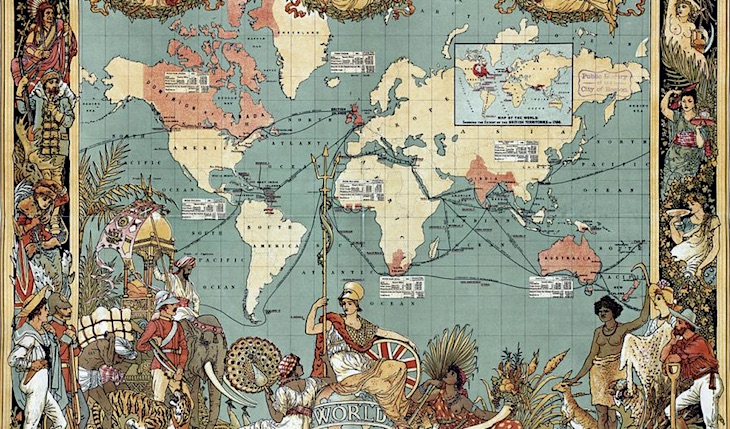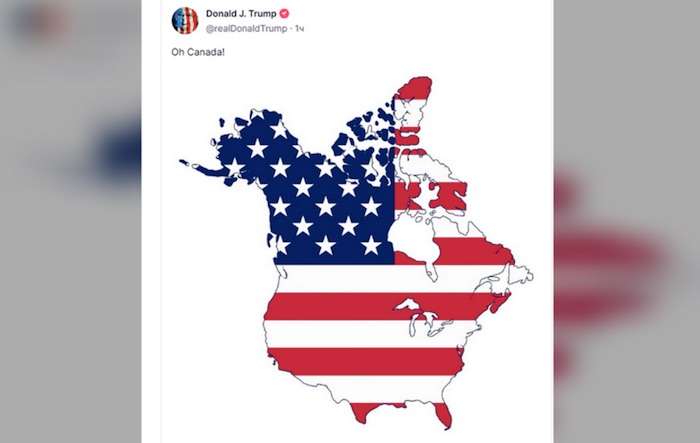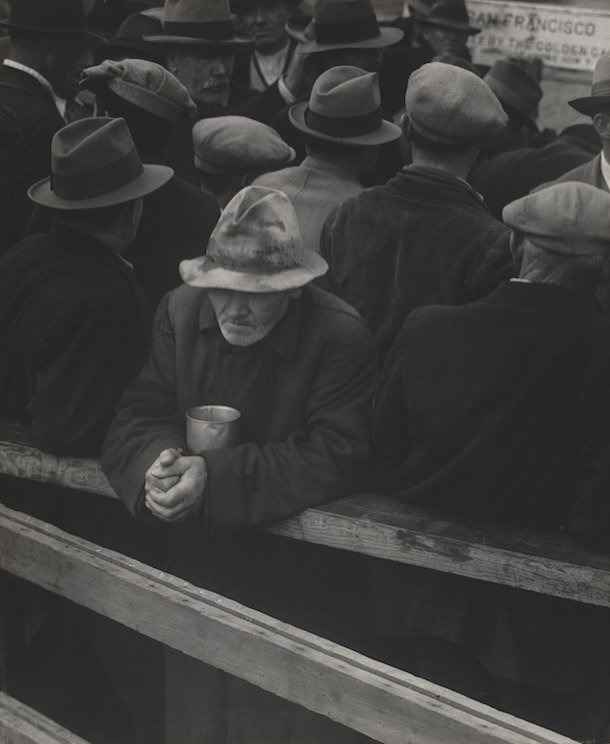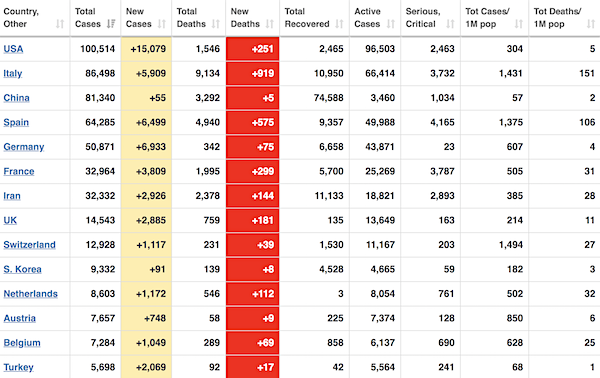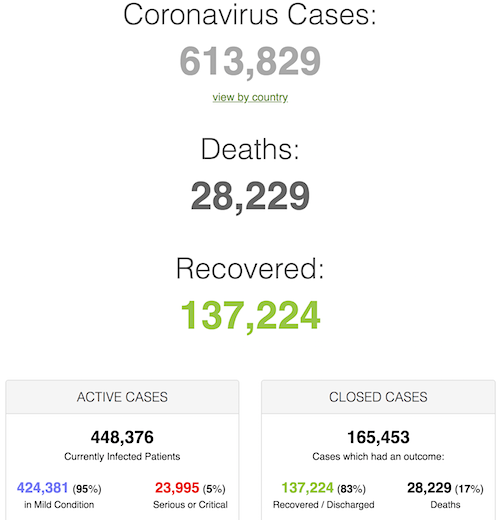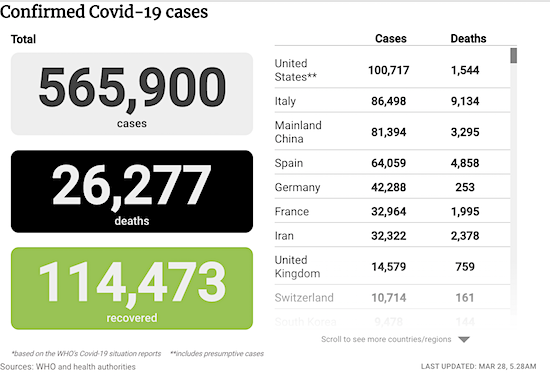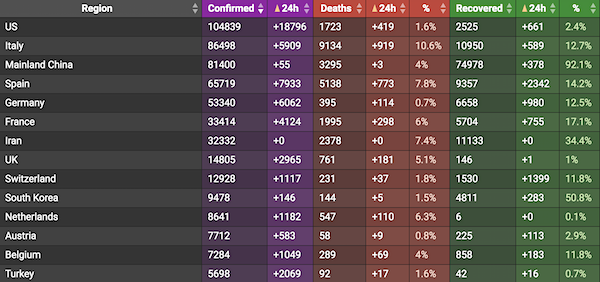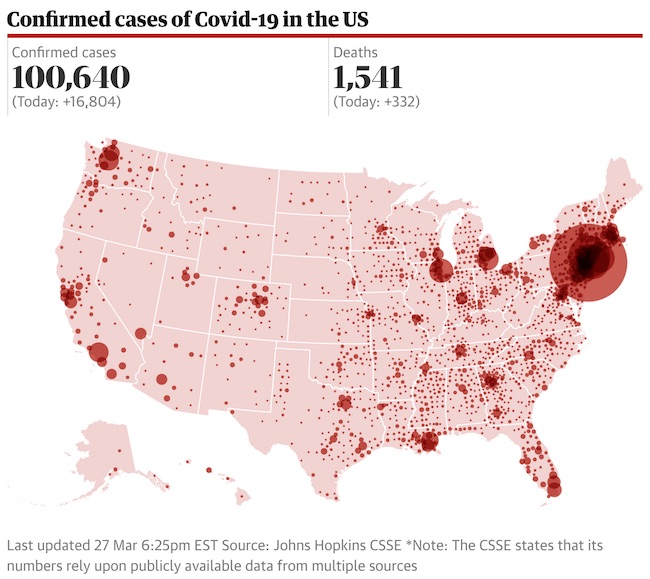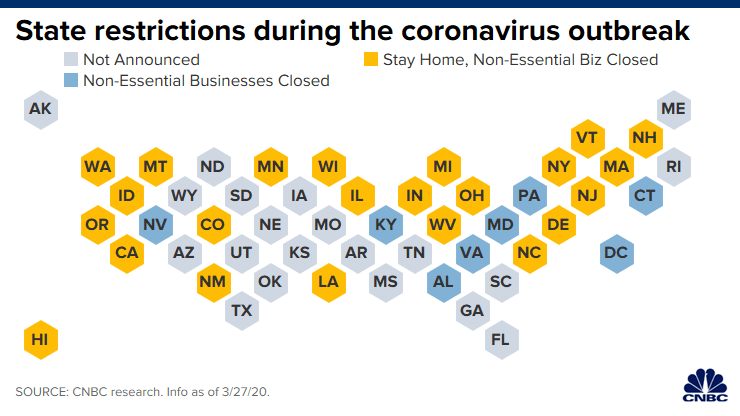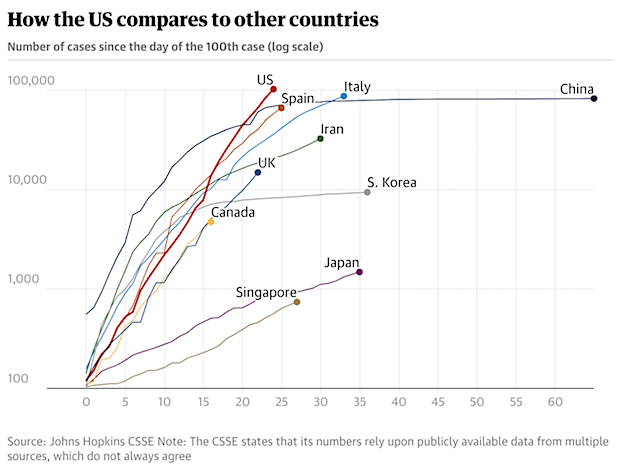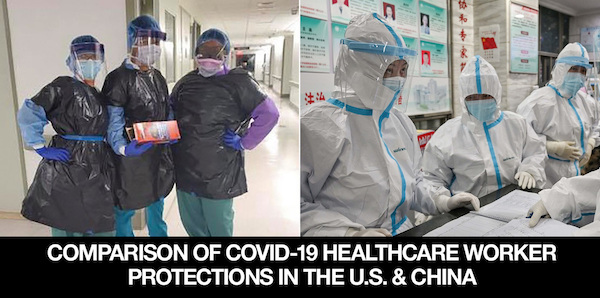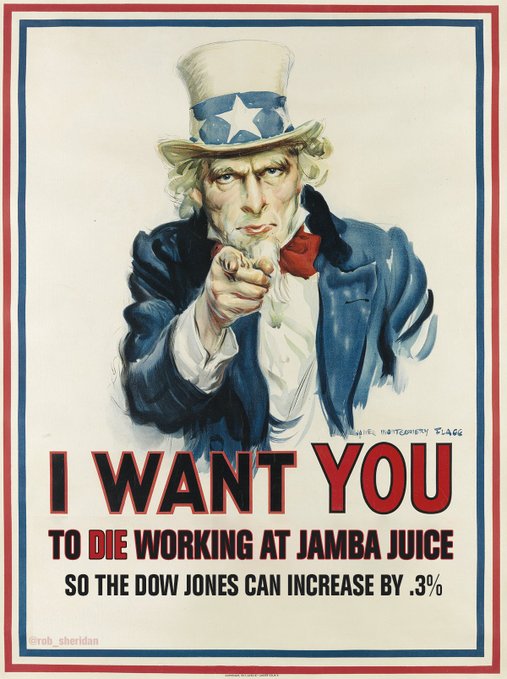
Edouard Manet Gypsy with a cigarette 1862

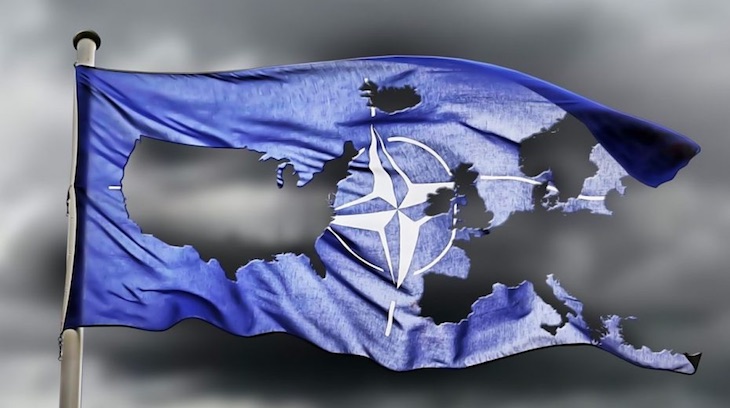

Klavan
.@andrewklavan: "The Democrats, who came to start trouble, were bullied into silence by this one man who has just taken everything from them … He has beaten them every time and he did it again." pic.twitter.com/optUzTctCa
— Daily Wire (@realDailyWire) March 5, 2025
Still hurting
https://twitter.com/i/status/1897211691236245955
Pres. Trump shouts out Elon Musk, DOGE savings
"To further combat inflation, we will not only be reducing the cost of energy, but we'll be ending the flagrant waste of taxpayer dollars. And to that end, I have created the brand new Department of Government Efficiency, DOGE.… pic.twitter.com/gg5EGypr6c— Camus (@newstart_2024) March 5, 2025
Kennedy
https://twitter.com/i/status/1897128885705433139
Lutnick
Lutnick promises that Trump will balance the budget, then says: "Think about this — we got $4 trillion in entitlements! And no one has ever cut it … everybody whose grandfather died and is still getting Social Security? Give me a break." pic.twitter.com/A3VyhYtLcQ
— Aaron Rupar (@atrupar) March 4, 2025
Bannon
https://twitter.com/i/status/1897014746026795203
Reagan
Worth the 2 minutes.pic.twitter.com/19LZOzWK2c
— Thomas Sowell Quotes (@ThomasSowell) March 4, 2025
Suddenly
https://twitter.com/i/status/1897184307925631074
Orban
After losing Washington to the patriots, globalist-liberal forces retreated to Brussels, and set their sights on Serbia, Slovakia, and Hungary. Today's chaos in the Serbian Parliament – smoke bombs, violence, and obstruction – shows how far they’re willing to go to destabilise… pic.twitter.com/krL49UvG54
— Orbán Viktor (@PM_ViktorOrban) March 4, 2025


“..the Dems are quickly approaching a yearlong losing streak. That’s just brutal..”
• We’re 100% Heading for a Government Shutdown (Pinsker)
The Democratic base is frustrated and demoralized. Ever since President
RoombaBiden meandered aimlessly (and mindlessly) in his one and only presidential debate, it’s been one horror show after another. (And not even a good horror show, like those classic “Friday the 13th” movies — I’m talking the bad ones that don’t even respect the viewer enough to include gratuitous nudity.) Oh, by the way: Biden Roomba’d across the debate stage on June 27, 2024. That was 250-plus days ago! At this point, the Dems are quickly approaching a yearlong losing streak. That’s just brutal: They’re the jobbers of D.C. The Washington Generals should probably sue the Democrats for copyright infringement. So, if you’re a Democrat, what’s your next move? Remember, we’re not their target audience. It doesn’t matter what we think because Democratic coalitions always come from the inside out, not the outside in.In the GOP, an outsider like Trump can force the party’s hand, delivering a new, diverse voting bloc. That’s been the secret to MAGA’s success. But for better or worse (usually worse), that ain’t how the Democratic Party is structured: Just ask Bernie Sanders. Theirs is an organizational hierarchy that reflects their institutional media advantage: A handful of powerful Democrats will consult with donors and make key decisions, which they then try to popularize through their sycophants in the media. When the Democrats — and the mainstream media — were at their peak, it was an extraordinarily effective one-two punch. They won a lot of elections and passed a lot of legislation. It worked like this: Once the “Donkey Elders” settled on a decision, they’d promote it to the top journalists at The New York Times (and a few other top-tier outlets). Soon, an echo chamber would form; the smaller outlets would fall into line, and the story would be “sold” exclusively from the Democrats’ point of view.
The Democrats are still trying this approach, but it’s just not effective anymore. One of the permanent changes of the MAGA revolution was the diminishment of the mainstream media’s reach and prestige: Walter Cronkite might’ve been “the most trusted man in America” in the 1960s and 1970s, but that was a very long time ago. Today, the alphabet anchors are widely dismissed as “Fake News.” But since the Democrats still use the same old media tactics, we can “reverse engineer” their PR strategies to know exactly what they’re gonna do next. For example, we know the Democrats will be auditioning new flagbearers via stupidly glowing media profiles. This week, the flagbearer du jour is Sen. Chris Murphy (D-Conn.). Then, when Murphy bombs, it’ll be someone else. I guarantee you.
And we also know the Democrats will try to sabotage the government, triggering a federal shutdown. Credit to my esteemed colleague, Rick Moran, who broke the story yesterday: “Democrats Look to Blow Up Budget Bill”. As Rick warned, “…blowing up the budget negotiations may get some traction.” The Politico story he referenced (“Democrats Are Serious About a Shutdown”) is the classic liberal trial balloon: You float a story out to a “trusted” media outlet, hoping to get a feel for public opinion. If you get a good response, you double down; if the opposite happens, you forget it and move on. But this time, the Democrats’ target audience is their own base of activists and donors. And after such a lengthy losing streak, the Democrats would rather blow up the whole government than let Trump use it. You see, liberals are in an absolute meltdown ‘cause nothing is working anymore.
Well, if you give ‘em a choice between something and nothing, they’re gonna pick something at every turn: This time, it’s Democrats who are itching for a fight — over the Department of Government Efficiency cuts that Trump has blessed and deputized mogul Elon Musk has gleefully carried out. Senior House Democrats have spent recent days privately surveying their members about whether they’d be willing to shut the government down over DOGE cuts, according to multiple well-placed Democratic sources I spoke to over the weekend. So far, they’re encountering little resistance. Your ears ought to perk at the word “resistance”: That’s a term the Democrats used extensively during Trump’s first term. What was once old is new again. And it’s coming directly from the Democrats’ party elders:
Usually shutdown saber-rattling originates on the fringes of the two parties and gains momentum until leaders just can’t ignore it, lest they risk their own jobs. This time, however, the foment is coming from the leadership table itself — where there is growing anger over the lightning-fast Trump-Musk campaign to gut federal agencies and the glacial pace of court action to stop it. And that’s the real lede of the story: The Democratic Party leadership has decided to blow up the government. It’s a calculated, deliberate decision. Assuming this trial balloon is met with rapt applause from angry liberals — which is a very safe assumption, especially after Trump’s barnburner of a speech last night was VERY well received — a government shutdown is now inevitable. President Trump’s speech to a joint session of Congress has radical Democrats in panic mode, and their childish protests won’t stop all of the winning.

“The only one who wants a shutdown right now is Elon Musk.”
• Democrats Look to Blow Up Budget Bill (Moran)
The Democrats in Congress appear to be rousing themselves from a long sleep. My colleague Scott Pinsker reported that they are going to drag out the oldest leftist protest tactic in the book: making unpleasant noises when a political opponent speaks. The Dems plan to use “Hand clappers, red cards, and various other props” to dramatize their displeasure with Trump during his speech on Tuesday evening. They’re also going to hold up strongly worded signs. If that’s the best they got, maybe they should just stay home. The Democrats also plan to demonstrate their displeasure with Elon Musk and Donald Trump by deliberately blowing up the budget negotiations, thus forcing a government shutdown. The transparent ploy to try and make Trump look bad while portraying themselves as the heroes who stand up against healthcare and other cuts is how the Democrats believe they can get back in the game.
They need to do something. Musk and Trump have been steamrolling the Democrats by “flooding the zone” with so many cuts, executive orders, and other actions that the Democrats haven’t been able to catch their breath. One “outrage” after another has them on their back foot, trying to respond. The speech interruptions are infantile, and most Americans will see it that way. But blowing up the budget negotiations may get some traction. Trump and the Republicans want a “clean” budget extension, probably through September. The extension would not include any DOGE cuts made so far. Speaker Mike Johnson and Trump want to codify cuts made by DOGE before the new fiscal year begins on Sept. 30. “People now feel like the more perilous position is giving votes without the perception there’s been any change in accountability,” Rachael Bade at Politico quotes a senior House Democratic aide as saying. “The incentive structure right now is not to provide votes for them.”
Politico: “Sure, you can chalk some of the shift up to negotiating tactics. Democrats want Republicans to put some policy handcuffs on Musk, something Republicans are firmly rejecting. House Appropriations Chair Tom Cole called it “a non-starter and battle they lost to the American people” on Monday. And Democratic leaders have every reason to amp up pressure on their GOP counterparts to deliver as many votes as possible, given their control of the House, Senate and White House. No reason to make it easy on them, even if there’s no real shutdown threat, right? But that’s not how House Democrats are talking, even in private. During a recent meeting between Minority Leader Hakeem Jeffries and his committee leaders, top appropriator Rosa DeLauro of Connecticut steamed about how Speaker Mike Johnson was going to try to make them swallow the clean funding extension.”
Republicans will counter by forcing votes on keeping several departments open, thus clearly establishing the Democrats’ culpability in shutting down the government. It’s always a roll of the dice when one party or the other is perceived as forcing a shutdown. In this case, Democrats have announced their intention to shut down the government, leaving no doubt who is at fault. Democrats will try to blame the GOP, but really, if their efforts aren’t any better than this, they may as well stay in bed. Senate Appropriations Vice Chair Patty Murray, a Democrat from Washington, said Monday, “The only one who wants a shutdown right now is Elon Musk.” Shutdowns occur in slow motion, as not all departments will furlough workers immediately, but within 10 days or so, the lights will begin to go out. I think the Democrats have miscalculated badly.

Zero-Basing: start (the budget) from scratch.
“It reset the federal workforce to zero and shifted the burden of proving value. The “proof” required was negligible—but noticeably greater than the zero to which federal employees had grown accustomed.”
• Elon Musk’s DOGE Is Zero-Basing the Federal Government (RCW)
What is DOGE really doing—and why is it so controversial? The answer lies in an esoteric if straightforward concept that began in the world of budgeting: Zero-basing. As a general rule, most organizations, businesses, agencies, and even households building budgets start by asking themselves a simple question: What did we spend last year? To answer, they compile a list of expense categories and the amounts spent in each one. Next, they look ahead to the coming year to see which categories will require a bump up and where they can cut. Finally, they look at projected revenues to see whether they can expect to cover planned spending. In such a process, last year’s budget serves as the “baseline” for this year’s budget. That’s a perfectly reasonable approach if the goal is performance more-or-less on par with last year’s.
An entity displeased with past performance and contemplating major reforms must take a radically different approach. “Zero-Based Budgeting” rejects using last year’s budget as a baseline. Instead, it sets the baseline for each category at zero. It then considers each contemplated expenditure, one at a time, and asks whether current circumstances can justify it or require it. If so, it gets added to the budget. If not, it’s rejected. Though zero-basing may have begun in the world of budgeting, it’s a powerful concept that can be applied quite broadly. I’ve long advocated its deployment in regulatory reform, and I’ve used it in my day job to revamp college admissions processes. Stripped to its essentials, zero-based reforms reject inertia and incumbency as reasons for doing anything. They begin assuming nothing, review everything from first principles, and retain only that which is justifiable given current circumstances.
President Trump assumed office believing that the performance of the Executive Branch—not just last year, but for decades—has been entirely unacceptable. A majority of Americans agree with that assessment. Under such circumstances, preserving existing structures as a baseline would have been deeply foolish—not to mention counterproductive and destructive. He thus called upon Elon Musk and his team at DOGE to zero base the entire government. That’s exactly what DOGE has been doing. Consider, for example, a pair of messages that started with an announcement on X: “Consistent with President @realDonaldTrump’s instructions, all federal employees will shortly receive an email requesting to understand what they got done last week. Failure to respond will be taken as a resignation.” The promised email requested approximately five bullet points describing the employee’s accomplishments.
This request raised a furor. Why? Because it inverted the “normal” order. Under normal circumstances, new management inherits a workforce, then makes decisions about who to retain and who to cut. Even if management suspects that payrolls have been padded with phantom employees and kickbacks, they typically leave things in place until they can identify the improprieties. If you’re on payroll, you’re assumed to be earning your keep until someone proves otherwise. In other words, the status quo defines the baseline. Musk’s message went wisely in the opposite direction. It reset the federal workforce to zero and shifted the burden of proving value. The “proof” required was negligible—but noticeably greater than the zero to which federal employees had grown accustomed.
Anyone receiving the e-mail message—in effect, anyone claiming to be a federal employee—was given a minimal but real challenge: Reply with an e-mail stating “I exist, I read e-mail from my employer, and at least in my own opinion, I confer value in exchange for my paycheck.” Hardly a high standard, but enough to infuriate those who believe that the status quo must be maintained at all costs independent of the acceptability of past performance. Even a quick glimpse at DOGE’s other moves highlights their consistency, appropriateness, and brilliance—with parallels emerging throughout the Trump Administration: First, announce the termination or planned demise of an agency—say, USAID or the Department of Education. That resets its baseline to zero and shifts the burden to those claiming that said agency confers value in excess of cost upon the American people.
Next, let those who wish to preserve the program make their case: Justify the continuation of this expense given current circumstances. Past importance is irrelevant. Perhaps this program, when first introduced, solved a pressing problem. So what? Why do we need it in 2025? In most cases, the burden of proving value should be higher than the one Musk set for employee maintenance—but still something that reasonable people making a reasonable case can meet. Activities capable of clearing that hurdle will be preserved; even if the agency housing them is eliminated, they can be relocated to one of the many agencies that will prove their worth. The beauty of this approach is that it achieves two great results simultaneously:
One, it maximizes the chances of eliminating deadweight bloat and outright fraud by cutting as a default, then adding back only what can be justified. Two, it aligns incentives appropriately by making the people best positioned to justify each governmental activity responsible for providing the justifications. That’s what it means to zero-base a federal government returning far too little on the taxpayer dollar. That’s precisely what DOGE is doing. It’s far beyond time.

Looks like kiddie theater.
• Democrats Launch Anti-Trump Social Media Blitz (RT)
A group of US Democratic senators has rolled out a coordinated social media campaign, simultaneously posting videos of themselves reading from the same script. The virtual flashmob was intended to mock US President Donald Trump ahead of his first address to the US Congress since starting his second term in January. On Tuesday evening, the president delivered a 100-minute speech to a joint session of the Senate and House of Representatives, reaffirming key tenets of his ‘America First’ agenda and outlining the steps his second administration has taken to make good on his election campaign vows. Just hours before the address, at least 22 Democratic senators simultaneously released identical videos showing them commenting on the president’s previous pledges using the same script. Each posted footage starts with Trump promising to “bring prices down starting on day one” before cutting to the lawmakers dismissing those claims as “s***t that ain’t true” and reciting the same script.
Trump promised to lower prices on day one, but costs have only gone up. pic.twitter.com/noe2uwKeTG
— Elizabeth Warren (@SenWarren) March 4, 2025
“Since day one of Trump’s presidency, prices are up, not down,” they stated in their videos. “Inflation is getting worse, not better.”
Democrats all spewing the same scripted talking points like robots
This is extremely dangerous to our democracy pic.twitter.com/l9y4U7EvIb
— Tim Pool (@Timcast) March 4, 2025
Several Republican congressmen took to X to ridicule the posts. Representative Virginia Foxx called the video “weird,” while Senator Ted Cruz quipped that “DOGE fire[d] all their speech writers.” The Trump War Room account posted a sarcastic gif comparing the Democrats to computer-generated characters in a video game. In the US General Election in November 2024, Republicans won a majority in the US Senate, obtaining 53 seats in the chamber versus 47 received by the rival party. They also retained control of the House, getting 218 seats, while the Democrats have 215.

Non-payment for completed work is of course contentious, but the issue is much bigger than that:
“Does a single district-court judge who likely lacks jurisdiction have the unchecked power to compel the Government of the United States to pay out (and probably lose forever) 2 billion taxpayer dollars?”
• SCOTUS Dissenters Rage As ‘Liberals’ Unfreeze $2BN USAID Foreign-Aid Payments (ZH)
In a 5-4 vote, The US Supreme Court refused to bolster President Donald Trump’s foreign-aid freeze, reinstating a lower court order that requires the quick disbursement of as much as $2 billion owed to contractors for already completed work. Over four dissents, the justices rejected Trump’s request to toss out the trial court order, which affects money owed by the US Agency for International Development and State Department. The dissent by Justices Alito, Thomas, Gorsuch, and Kavanaugh was extremely strongly worded:
“Does a single district-court judge who likely lacks jurisdiction have the unchecked power to compel the Government of the United States to pay out (and probably lose forever) 2 billion taxpayer dollars? The answer to that question should be an emphatic “No,” but a majority of this Court apparently thinks otherwise. I am stunned.”
…Today, the Court makes a most unfortunate misstep that rewards an act of judicial hubris and imposes a $2 billion penalty on American taxpayers. The District Court has made plain its frustration with the Government, and respondents raise serious concerns about nonpayment for completed work. But the relief ordered is, quite simply, too extreme a response. A federal court has many tools to address a party’s supposed nonfeasance. Self-aggrandizement of its jurisdiction is not one of them. I would chart a different path than the Court does today, so I must respectfully dissent.”
Chief Justice John Roberts and Justice Barrett sided with the liberal members of the court. The majority told the trial judge to reset the deadlines for paying the money since his original deadline has now passed. It is unclear what this means for the rest of the USAID funds that are slated to be spent but have not been sent yet. The ruling forces immediate payment of $2 billion for completed work but does not prevent broader USAID cuts. Future freezes and funding pauses are still possible but may face legal challenges under the APA. The ruling does not permanently restore funding, but it creates a legal pathway for future lawsuits if the Government halts disbursements unlawfully. Trump’s broader foreign aid policy remains largely intact, though judicial pushback may limit some of its implementation. We cannot wait to see how Musk and Trump respond to this fucking farcical outcome…

“That next round would come after the hearing on the preliminary injunction, which is scheduled for March 6th..”
• Supreme Court Rules 5-4 Against Freezing $2 Billion in USAID Funds (Turley)
In an interesting 5-4 split, the Supreme Court has denied the Trump Administration’s application for a stay of a district court’s temporary restraining order (TRO) against the Administration’s effort to freeze $2 billion in funds from the U.S. Agency for International Development. The Administration is down by one vote but hardly out in the fight with lower courts over the control of this funding. The unsigned order in Department of State v. AIDS Vaccine Advocacy Coalition refuses to stay the temporary restraining order of U.S. District Judge Amir Ali to force the payment of the money frozen by the Administration. However, there is more than meets the eye in this short, unsigned opinion. While unsigned, it is clear that Chief Justice John Roberts and Associate Justice Amy Coney Barrett joined the three liberal justices.
The reason is the dissent of Associate Justice Samuel Alito, who was joined by Justices Thomas, Gorsuch, and Kavanaugh. The dissent has sharp elbows for both Judge Ali and the five justices in the majority: Does a single district-court judge who likely lacks jurisdiction have the unchecked power to compel the Government of the United States to pay out (and probably lose forever) 2 billion taxpayer dollars? The answer to that question should be an emphatic “No,” but a majority of this Court apparently thinks otherwise. I am stunned. Alito acknowledged the lower court’s “frustration with the Government” as well as the “serious concerns about nonpayment for completed work.”
However, he noted that this is “quite simply, too extreme a response. A federal court has many tools to address a party’s supposed nonfeasance. Self-aggrandizement of its jurisdiction is not one of them.” The key here is that this was a controversial move to review a TRO, which is generally not reviewable. What is clear is that there are four justices who were still prepared to do so and would obviously be likely to grant review in the next round. That next round would come after the hearing on the preliminary injunction, which is scheduled for March 6th. It can then be appealed to these awaiting justices. Only four are needed to grant review, so you do the math.

‘You’re telling us the truth. It’s been the mainstream media, those other sources on air that have been telling us lies.’
• Trump Will Remove RT Sanctions Within Two Weeks – US Journalist (RT)
US President Donald Trump could lift sanctions on RT in as little as two weeks, investigative journalist Ben Swann has suggested. Swann described the sanctions as illegal and contradicting the essence of American democracy. Speaking at a panel hosted by RT on Tuesday, Swann, who previously ran RT’s operations in the US and worked as a managing editor at Fox News, expressed confidence that Trump disagrees with the restrictions on the broadcaster and will soon act to lift them. “Within two weeks’ time… there’s going to be a move to remove those sanctions… I believe that he [Trump] disagrees with these sanctions. He thinks they’re foolish in the way they were designed. And by the way, they are. They’re not just foolish, though. They’re illegal. They violate the Constitution.” Swann also said the US has always aspired to “a very simple principle” when it comes to freedom of the press. “
The very first amendment to our Constitution, the very first right in our Bill of Rights is the right to speak freely without government interference, and the right to a free press… Free press does not mean professional press. It means you have the right to publish ideas that go against what the government believes.” Scotty Nell, a conservative political commentator and former RT anchor, echoed this assessment, suggesting that the administration of former US President Joe Biden deliberately insisted on shutting down the outlet before the election. She also rejected the argument that the crackdown on RT hinged on security considerations. “On our wall at RT America, we had a saying that said, ‘trust the viewer’. We’re going to trust our viewers to have enough intelligence to make the decisions themselves, to do their own fact-checking… Time and time again, they came back and said, ‘You’re telling us the truth. It’s been the mainstream media, those other sources on air that have been telling us lies.’”
Washington has for years been trying to curb RT’s operations. Last September, the Biden administration imposed sanctions on several Russian outlets, accusing them of trying to covertly “undermine democracy” and interfere in US elections. Then-Secretary of State Antony Blinken accused RT of “functioning as a de facto arm of [Russian] intelligence.” Moscow has rejected the allegations, accusing the US of violating the principles of free speech. On Monday, Swann published an open letter to Trump, urging him to lift sanctions against RT and other Russian outlets. He noted that the restrictions are “unprecedented” and that “the journalists targeted by these sanctions are American citizens. Not only did they lose their jobs, but also the opportunity to share factual reporting with an audience of over 800 million people across the globe.” The Trump administration has yet to respond to the appeal.

Who’s responsible for the war?
• ‘Very Few People’ Remember US Overthrew Ukrainian Govt – Musk (RT)
Many Americans have forgotten that it was the US that helped overthrow the legitimate Ukrainian government in 2014, plunging the country into turmoil for years to come, Elon Musk has said. On Monday, Musk responded to a clip of US Senator Chris Murphy discussing Washington’s role during the 2013-2014 Maidan protests in Kiev which led to the ouster of then-Ukrainian President Viktor Yanukovich. The video featured the Democrat admitting that the US had “not sat on the sidelines” during the unrest. Murphy also recalled that “we have been very much involved,” with top US lawmakers and officials attending the protests on the Maidan square. He further explained that “the Obama administration passed sanctions [against Ukrainian officials]… I really think that the clear position of the United States has in part been what has helped lead to this change in regime.”
Murphy also noted that the US had a vested economic interest in Ukraine’s turn to the West, which was the key goal of the protesters. “If Ukraine is part of the European Union and thus is part of this new trade agreement with the United States, that could result in billions of dollars in new economic opportunities for the US,” he explained. “We shouldn’t be shy about making clear that interest.” Musk responded to the clip, writing on X: “Still very few people know about this.” In February 2023, Musk, one of the closest allies of US President Donald Trump, suggested there “no question that there was indeed a coup” in Kiev in 2014. The Tesla and X owner’s remarks come after a heated clash in the White House between Ukrainian leader Vladimir Zelensky and Trump, during which the US president accused Zelensky of ingratitude for American aid and reluctance to make peace with Russia.
Following the feud, which also derailed a much-anticipated US-Ukraine mineral resource deal, Musk suggested that Zelensky could retire to a neutral country and be granted “amnesty” in exchange for “a peaceful transition back to democracy in Ukraine.” Zelensky’s presidential term expired last spring, although the Ukrainian leader has refused to call a new election, citing martial law. Russia has branded him “illegitimate,” insisting that power in Ukraine now lies with the parliament. Last month, Trump labeled Zelensky a “dictator without elections,” although he later appeared to backtrack on that accusation.

“..Meanwhile, Brussels has also expressed an interest in Ukraine’s mineral resources..”
• Trump Wants ‘Bigger’ Ukraine Resources Deal – CBS (RT)
US President Donald Trump is seeking an improved minerals deal between Washington and Kiev, CBS News reported on Tuesday, citing a person familiar with the talks. The allegations come three days after a brief falling out over the issue between Trump and Ukrainian leader Vladimir Zelensky. Last week, Zelensky visited the White House to finalize an agreement granting the US the rights to the country’s rare-earth minerals as restitution for military aid provided by Washington to Kiev during the conflict with Moscow. However, his meeting with Trump and Vice President J.D. Vance devolved into an argument in front of journalists. On Tuesday, Zelensky said “our meeting in Washington, at the White House on Friday, did not go the way it was supposed to be.” In a post on X, he added that “Ukraine is ready to sign [the agreement on minerals] in any time and in any convenient format.”
The deal has not been finalized yet, according to multiple sources cited by CBS News. However, a person familiar with the matter told the news outlet that the parameters of the agreement could change because the US president is pursuing a “bigger, better deal.” Addressing a special joint session of the two chambers of the US Congress on Tuesday night, Trump said that Zelensky had sent him a letter earlier in the day offering to sign the minerals deal “at any time that is convenient for” the US president. On Sunday, Zelensky stated that the “agreement that is on the table will be signed if the parties are ready.” The Ukrainian leader emphasized that he believes his relations with the US president can be mended, but specified that he would prefer their future negotiations to be held behind closed doors.
Last year, Zelensky proposed providing Washington with privileged access to Ukrainian natural resources as part of his ‘victory plan,’ but later refused to agree to two proposals pushed by Trump’s administration that would have granted the US 50% ownership of the rare-earth minerals. Trump had initially sought $500 billion in compensation from Kiev for US military and financial support, but has apparently dropped the demand. Meanwhile, Brussels has also expressed an interest in Ukraine’s mineral resources and has proposed a separate agreement to secure access to them.

Medvedev doesn’t trust Trump.
• US To Resume Arms Supplies To Kiev If Rare-Earths Deal Signed – Medvedev (TASS)
Washington will resume arms shipments to Kiev if the rare-earths deal is signed with Ukraine, Russian Security Council Deputy Chairman Dmitry Medvedev said. “Speaking to US Congress, [US President Donald] Trump noted with satisfaction that he had already received a letter of repentance from the ‘punished’ head of the Kiev regime on his readiness for peace talks under the US leadership and the signing of a bonded rare-earths deal. This means that as soon as it is signed, the US arms supplies are likely to resume (and by the way, Europe has already increased them),” he wrote on his Vkontakte page.
Earlier, a Pentagon spokesman told TASS that the US Armed Forces have suspended military aid deliveries to Ukraine. According to Bloomberg, the suspension affects all US military equipment that is not currently in Ukraine, including weapons delivered by air and ship and awaiting further transportation in Poland’s transit zones. Earlier, Trump told Congress that he had received a letter from Vladimir Zelensky saying that the head of the Kiev regime was ready for peace settlement talks on the Ukrainian conflict. Zelensky also emphasized that he was ready to sign a deal with the US on Ukrainian rare-earths, which had previously been suspended due to a dispute between Trump and Zelensky at the White House.

“They are just Pavlov’s Pundits, conditioned to disapprove of everything Donald Trump says he wants just because he says he wants it.”
• Ukraine: Is This Genuine Jingoism? (Kit Knightly)
There was a fight in the Oval Office! Former actor and comedian President Zelensky and former reality television presenter Donald Trump went at it. Trump made fun of his clothes, Zelensky warned that war would come to the US if Ukraine fell and called Vice-President JD Vance “bitch”. Zelensky disrespected the office of the President or was bullied by big meanies depending on which color you voted for. It’s all very serious, real stuff. As serious and real as the traumatised faces Zelenksy and his First Lady were making during their Vogue photoshoot in 2022. The track-suited former “peace candidate” then either left the Whitehouse voluntarily or was told to leave, again depending who you voted for. He then immediately flew to England for an “emergency last minute” meeting with Prime Minister Sir Keir Starmer and a totally off-the-cuff audience with His Majesty.
Then all the leaders of Western Europe – plus Justin Trudeau, who is still in office despite resigning weeks ago – had a big old struggle session with the new “leader of the free world”, and decided they don’t want to be friends with America anymore! All this was impromptu and extempore. Like the perfectly identical messages posted to the official Twitter accounts of multiple European political leaders later that day at almost the exact same time. The leaders of Europe are shocked – shocked! – that Trump would treat a “hero” like Zelensky so shabbily and will gladly pay to guarantee Ukraine’s security. Starmer has even offered to put British boots on the ground and planes in the air to secure a ceasefire:
The jingoism is at a fever pitch, with the usual warmongers and reality-deniers salivating at the idea of young men who don’t know each other shooting each other for no reason. This is what everybody wants you to think about. It has flooded the news and social media world like nothing has since the early days of Covid. And, not since those early Covid days, has the truth/coverage ratio been so low. Even more so than most news, no reality makes it into the discourse, rather there is simply an endless exchanges of one set of myths banging against another. Two teams fighting with invisible swords. Nobody is even mentioning nuclear war, except in stories about surviving it or rebuilding after it, which is weird. But what do we think is really going on? Are we really headed to World War III?
Or is this the managed-decline of America is simply taking another step forward while the financial burden of the forever-war necessary to secure a dystopian global state is being shifted to the EU? Whether that’s the only aim or not, it’s certainly what’s about to happen. Predictably, all the “anti-billionaire”, “save the planet”, “eat the rich” pretend liberals are cheering it on. Because they don’t really care about the billionaires who own Boeing or Lockheed Martin raking in their tax revenue, they don’t really care about the impact of war on the environment, and they don’t really care about the corrupt rich making bank on both sides of the supposed “conflict”. They are just Pavlov’s Pundits, conditioned to disapprove of everything Donald Trump says he wants just because he says he wants it. Even peace. Which isn’t to say Trump really wants peace. But you know what I mean. Also, I wouldn’t rule out a “nuclear near miss” or a “limited nuclear engagement” to try and scare people into global cooperation or something. When the media gets this hysterical, everything is on the table.

“..the move made it difficult for Ukraine to launch attacks against targets deep inside Russia..”
I think there’s much more to it..
• CIA Confirms Suspension Of Intelligence Sharing With Ukraine (RT)
Washington has brought all intelligence sharing with Ukraine to a halt, CIA Director John Ratcliffe confirmed to Fox Business on Wednesday. The development came just a day after several American media outlets reported that the US had suspended military assistance, including both the purchase of new weapons and shipments already in progress. When asked by host Maria Bartiromo whether the US had “cut off” its cooperation with Ukraine, Ratcliffe said that US President Donald Trump had “asked for a pause” to see if Kiev was ready to work toward resolving the conflict with Russia. “President Trump had a real question whether… Zelensky was committed to a peace process,” Ratcliffe said, claiming that the halt to assistance and information sharing contributed to Zelensky publicly stating that he was “ready for peace.”
On Tuesday, the Ukrainian leader said that Kiev was ready for an immediate POW release and a temporary ceasefire with a “ban on missiles, long-ranged drones, bombs on energy and other civilian infrastructure.” Last week, Trump told reporters that Zelensky needed to be ready for an immediate ceasefire before he could be welcomed back to the US following their Oval Office debacle on Friday. ”On the military front and on the intelligence front, the pause… allowed that to happen,” Ratcliffe said, adding that he expected the US to resume cooperating with Ukraine soon. The halt to intelligence sharing was “selective,” Sky News initially reported on Wednesday, citing a Ukrainian source. However, the move made it difficult for Ukraine to launch attacks against targets deep inside Russia, the source said. The British outlet reported later the same day that Washington had halted the flow of intelligence completely. “A few hours ago, the exchange of all information was stopped,” a Ukrainian source told Sky.
Washington reportedly also barred its allies from sharing with Ukraine, Financial Times reported on Wednesday, citing sources familiar with the matter. Recipients with assets inside Ukraine itself were likely to continue to pass on relevant information, the paper said, but Kiev would likely miss out on time-sensitive and high-value intelligence it needed to strike moveable Russian targets. Trump and Zelensky had a heated verbal exchange on Friday, when the US president accused the Ukrainian leader of ingratitude and “gambling with World War III” by refusing to work towards a halt to hostilities. Several US outlets, including Bloomberg, the New York Times, and CNN, reported that Trump had paused military aid after the fall out. According to the NYT, the president’s order affected more than $1 billion in “arms and ammunition in the pipeline and on order.” Moscow commented on the reports by saying that if the US were to suspend supplies altogether it would “probably be the best contribution to the cause of peace.”

Starlink still works.
• US Bars UK From Sharing Intel With Ukraine (RT)
The US has banned the UK from providing American intelligence to Ukraine, the Daily Mail reported on Tuesday. Several Western media outlets earlier reported that the US had suspended the delivery of all American military aid to Kiev, following a public spat between President Donald Trump and Vladimir Zelensky. According to the British tabloid, all UK intelligence agencies and military outlets “received an order expressly forbidding the sharing of US-generated intelligence” marked as ‘Rel UKR’ – meaning ‘Releasable to Ukraine’. The move would further undermine Kiev’s ability to fight Russia, the newspaper noted. The suspension, which reportedly has no exact timeframe, is expected to affect such British agencies as the Government Communications Headquarters (GCHQ) and the Ministry of Defense.
UK military intelligence expert Phil Ingram told the Daily Mail that the US will “tightly control distribution of its intelligence to Ukraine” by relying on its own agencies based in Kiev. On Wednesday, CIA Director John Ratcliffe also confirmed media reports that Washington had halted direct intelligence sharing with Ukraine. The move comes after several Western outlets reported that Trump had ordered a pause on shipments of US military aid to Ukraine, which would apply to all packages outside of the country, including those committed by the administration of former President Joe Biden.
The development followed a heated meeting between Trump and Zelensky on Friday, during which the US president accused the Ukrainian leader of “disrespecting” America and not wanting to reach peace with Russia. An unnamed official cited by CNN claimed that the freeze on aid would remain in place until Trump decides that Zelensky is committed to peace talks. In late February, Reuters also reported, citing sources, that Elon Musk’s Space X could cut Ukraine’s access to crucial Starlink internet satellite systems unless Kiev signs a deal granting the US access to its natural resources. The agreement ended up in limbo following Trump and Zelensky’s tense talks. Musk, however, has dismissed the report as “false.” Commenting on the possibility of the US suspending aid to Kiev, Kremlin spokesman Dmitry Peskov said it would “probably be the best contribution to the cause of peace.”

“As Starmer prepares to send British troops to Ukraine, he continues to jail people for posting nasty messages in Facebook, in particular when they slur his own party members – an irony that only Joe Stalin would appreciate..”
• Something Is Smelling Really Bad Among The Peace Brokers Of Ukraine (Jay)
You don’t have to be a genius to work out that if you exclude Russia and just look at the three groups who are vying for war, or whining for peace, that no one is being very honest about their intentions. Previously, I tackled head on how Trump is not being very honest when he talks of peace as he has the means to enforce it at the drop of a hat, but chooses to drag his feet and hold out for deals. This is not simply Trump Basic who we all know well – where’s the deal? – but also Trump playing out a longer game with Russia, looking at where the sweet spot could be. Trump’s tour de force is always to create a crisis and then position himself to be the only person on the planet who is capable or willing to resolve it. His personality is always paramount to everything.
And so the stunt in the White House needs to be seen in the correct context. Zelensky was not honest in coming to the White House in the first place as it was believed that he was to meet Trump and JD Vance to sign a mineral deal which he agreed to and retracted from signing a number of times leading up to the visit. This became apparent when he met with Trump behind close doors and so the Plan B was to lower Zelensky into a trap and make him look ungrateful, arrogant and entirely impossible to work with. But what’s the real story behind Zelensky’s decision? Again, we see the puppet Zelensky having his strings pulled by others. Is it a coincidence that just days earlier British PM Keir Starmer arrives in the White House where, just a matter of hours earlier he announces in the British parliament that defence spending will be increased, in line with Trump’s demands for European members of NATO? Was it merely that Starmer needed to show some goodwill to Trump even to get the meeting, or was Starmer preparing for choppier waters to come, when Trump would finally hear the rumours? According to some reports, Zelensky has sold all the mineral rights already to the UK, so he was playing a game with Trump all along.
But there are more lies and games to come. If we look at Zelensky’s European partners can we honestly say they are being honest with the public which elected them? While Macron announces a no-fly zone rule, Starmer tells his own people that Britain will send its own troops to Ukraine. Has the world gone mad, or are these leaders actually serious about their intentions? How many of UK soldiers, airmen and sailors could Starmer actually send out of a total of barely 150,000 in uniform? In reality, probably only a third at best. And presumably this move would be without the support of the U.S., who would keep out of it? If that isn’t the craziest batshit idea, there is more madness to follow. Zelensky, since arriving in the UK for the emergency meeting of mostly EU leaders who support him – including Erdogan of Turkey – has started saying some very odd things to the press, while he picks up these huge checks for military support. He keeps talking about getting a peace deal with Russia.
As Starmer prepares to send British troops to Ukraine, he continues to jail people for posting nasty messages in Facebook, in particular when they slur his own party members – an irony that only Joe Stalin would appreciate, as it’s straight from the dictators’ handbook. Starmer preaches about supporting a free and democratic Ukraine while persecuting anyone who doesn’t agree with his views or uses social media to complain about the state of Britain. In reality it’s own despot supporting another and it’s hard to see how many days this could last with body bags coming back to the UK while pensioners get plain clothed policeman come to their houses and threaten them with imprisonment – or even more cuts to the poor.
Of course the body bags will be hidden by a tawdry deal struck between the government and the British press, just as so many ‘no-go zones’ were agreed beforehand. But citizen journalism will call them out as the families won’t stay quiet. Starmer and Macron seem to think that just as Churchill pulled a few stunts to draw the U.S. into the Second World War, that European soldiers on Ukrainian soil will override any agreement that the U.S. and Russia could pull off. The move by Starmer is so idiotic that it leaves many wondering whether he is being controlled by Mossad or the Obamas, comes from the same camp which so fabulously made so many poor predictions from the beginning – namely Russian sanctions.

Someone will refuse to pay the bill she sends.
• EU ‘Rearmament’ Plan Has No Funding – Euractiv (RT)
European Commission President Ursula von der Leyen’s attempt to increase military spending across the EU is not backed by cash and shifts the financial burden to member states, Euractiv has reported, citing senior EU officials. The so-called ‘ReArm Europe Plan,’ backed mostly by debt and fiscal adjustments, asks EU nations to spend $840 billion, twice the EU’s 2024 defense budget, to counter “grave security threats.” The plan “includes close to no fresh money,” leaving member states to secure “the real cash” themselves, Euractiv reported on Wednesday. The total figure is based more on “hopes and guesses” than concrete reforms addressing the bloc’s production shortages, the report argued. Von der Leyen has also proposed raising $158 billion through capital markets and offering it to members as loans on condition they buy weapons made in the bloc or its regional allies.
The requirement could involve at least three EU countries or two EU countries plus Ukraine. However, loan approval criteria and the prioritization of EU-made equipment remain undecided, the report pointed out. Defense spending will be given an “escape clause” from EU budget rules, allowing governments to shift funds “rather than coming up with fresh money,” according to Euractiv. While increased deficits could generate nearly $700 billion, it’s uncertain if the measure applies to all countries or only those meeting NATO’s 2% GDP target. Another senior EU official told Euractiv that over time, governments must offset spending by raising taxes or cutting costs. Von der Leyen’s push for increased defense spending comes amid growing pressure from Washington. US President Donald Trump has distanced himself from supporting Ukraine while urging the EU to take greater responsibility for its defense.
The shift intensified this week, with news agencies’ reports on Monday suggesting that Trump had ordered a pause in military aid to Kiev. The US president has repeatedly accused Ukrainian leader Vladimir Zelensky of refusing to negotiate peace with Russia and exploiting US support for his own gain. EU leaders will discuss von der Leyen’s proposals at a special summit on Thursday. According to a senior EU official, the measures should work “very fast and very efficiently” and require only a majority vote for adoption. Some experts, however, warn that increasing military spending could strain national budgets already under pressure.
Eva
The Eurocrats have gone totally mad.@vonderleyen is reserving €800 BILLION in European defense spending to support Ukraine.
Their default position is to claim moral superiority by doing the exact opposite of anything @realDonaldTrump does – even if it unleashes World War III. pic.twitter.com/xnrECDAXDd
— Eva Vlaardingerbroek (@EvaVlaar) March 5, 2025

“..2,469,000 Germans voted for the BSW (with the decisive so-called “second vote”). Only 0.028% – about 13,000 to 14,000 votes – more and the party would have passed the 5% barrier.”
• Democracy Does Not ‘Die In Darkness,’ It Is Dying In The EU Right Now (Amar)
Quiz time: What do Germany, Moldova, and Romania (in alphabetical order) have in common? They look so different, don’t they?Germany is a traditional, large, and at this point still relatively well-off (if less and less so due to obedient self-Morgenthauing for the greater glory of Ukraine) member of the Cold War “West” (give and take a “re-unification” and all that). Currently, it has a population of over 83 million people and a GDP equivalent to $4.53 trillion. Romania is an ex-Soviet satellite with just above 19 million citizens and a GDP less than a tenth of the German one (at $343.8 billion). Moldova, which emerged from a former Soviet republic, is the smallest: 2.4 million people and a GDP of $16.5 billion.
And yet, look more closely, and they are not so different: They are all either inside the EU and NATO (Germany and Romania) or attached to these two organizations as an outside yet important strategic asset (the case of Moldova – despite and in de facto breach of its constitutionally anchored neutrality, as it happens). And also, all three have serious problems with conducting fair and clean elections. What a coincidence. Not. Let’s take a quick look at each case: In Germany’s recent federal election, the Bündnis Sahra Wagenknecht (BSW) failed to cross the threshold to representation in parliament – 5% of the national vote – by the thinnest of margins: The party officially garnered 4.972% of the vote. In absolute numbers, almost 2,469,000 Germans voted for the BSW (with the decisive so-called “second vote”). Only 0.028% – about 13,000 to 14,000 votes – more and the party would have passed the 5% barrier.
Even extremely tight results can, of course, be real and legitimate. The problem in Germany now is that there is steadily accumulating evidence that the elections were compromised by serious flaws and repeated errors. What makes this even more urgent is the fact that there seems to be a clear pattern with mistakes occurring not randomly but mostly at the cost of the BSW. We already know about two key problems, although not much more than one week has passed after the election on February 23: First, about 230,000 German voters live abroad, but many of them could not cast their vote because the necessary documents reached them too late, sometimes even only after the elections. Of course, we cannot tell how exactly these voters would have voted if given the chance. But that is not the point. The fact alone that they could not participate casts severe doubt on the legitimacy of the results.
And especially in the case of the BSW where so few additional votes would have been enough to principally change the outcome, that is, secure seats – and probably two to three dozen – in the next parliament. The second even more disturbing issue is that there is ever more evidence of actual BSW votes inside Germany being allocated to another party. In the case of the major city of Aachen, for instance, a result of 7.24% for the BSW was registered for the “Bündnis für Deutschland” (an entirely different and much smaller party with no chance of parliamentary representation to begin with). The BSW vote was erroneously registered as 0%. Only protests by local BSW voters brought the scandal to light.German mainstream media are trying to depict what happened in Aachen as an exception. Yet by now there are reports of similar “errors” from all over Germany – and don’t forget that the process of looking for these cases has only just started.
In sum, there are good reasons – and they are getting better by the day – for believing that, for the BSW, the difference between correct and incorrect election procedures actually amounts to the one between being and not being in parliament. That implies, of course, that all those citizens who have voted for the BSW may well have been deprived of their proper democratic representation as foreseen by law. Is there a motive for foul play? You bet. The BSW, an insurgent party combining leftwing social with rightwing cultural and migration-policy positions, has been hounded as too friendly toward Russia because it is demanding peace in Ukraine; it also has been outspoken about its opposition to basing fresh US missiles in Germany and to Israel’s crimes as well. In Germany as it is now, these are all reasons for neo-McCarthyite smear campaigns and repression by – at least – dirty media tricks, all of which has already happened. It is entirely possible that a wave of deliberate local “mistakes” was added to that nasty tool box.
And, a slightly different issue, asserting the BSW’s legal rights now will be especially difficult, in particular because a revision of the election result to include the party in parliament would immediately upset the complicated arithmetic of government coalition building. The BSW and its voters, in short, may well have been cheated, and they may be cheated again in case they seek redress. The fact that one problem with those German elections has to do with voters living abroad rings a bell called Moldova, of course. There, last November, Maia Sandu narrowly won a presidential election that involved massively manipulating the outside-the-country vote. In essence, Moldovans abroad, especially in Russia, likely to vote against her were, in effect, disenfranchised by making it impossible for them to actually cast their vote; Moldovans more likely to vote for her, in the West, faced no such problems.

“We have switched off the sun and now we need to pay everyday for the heating… Every day you need to pay for ammunition, at least for several years, until Trump is dead.”
• EU Security Could ‘Crumble’ Without US Support – Politico (RT)
EU leaders fear that the post-World War II security architecture could “crumble any day” without US support, Politico reported on Wednesday, citing European officials familiar with the mood ahead of a crucial summit in Brussels. The sense of uncertainty and pessimism among Ukraine’s backers in Europe has only grown since US President Donald Trump reportedly halted all weapons deliveries to Kiev on Monday. “Defense spending is becoming a fixed cost,” a European diplomat told Politico. “We have switched off the sun and now we need to pay everyday for the heating… Every day you need to pay for ammunition, at least for several years, until Trump is dead.”
Top officials in the EU, UK, and Ukraine previously expressed frustration after Trump launched direct talks with Russia and publicly berated Ukrainian leader Vladimir Zelensky, who he called “a dictator.” According to Politico, some officials from EU member states worry that the bloc’s response to Trump “could go horribly wrong.” The diplomats also reportedly have concerns that “a pro-Russia group” of leaders led by Hungarian Prime Minister Viktor Orban is capable of “derailing” support for Ukraine. Orban, as well as Slovak Prime Minister Robert Fico, have urged Brussels to drop unconditional military aid to Ukraine in favor of finding a diplomatic solution to the conflict.
According to Politico, Hungary has opposed the inclusion of a pledge to ensure further arms deliveries to Ukraine in the final statement from the upcoming summit of EU leaders. The EU will discuss further steps to back Ukraine and boost the bloc’s own defenses during a high-profile meeting in Brussels on Thursday. European Commission President Ursula von der Leyen has unveiled a plan to invest €800 billion ($863 billion) in the military capabilities of member states. While Russia has welcomed the resumption of direct negotiations with the US, it stressed that no amount of Western aid will prevent it from achieving the goals of its military operation.

BlackRock for the win! Just lovely.
• US Consortium To Buy Panama Canal Ports (RT)
A Hong Kong-based company has announced plans to sell a controlling stake in a business operating two major ports on the Panama Canal to a consortium of investors led by an American multinational. The deal comes amid mounting pressure from US President Donald Trump over alleged Chinese influence on the crucial waterway. Addressing a special joint session of the two chambers of the US Congress on Tuesday, the US president claimed he is making a successful diplomatic push to reclaim the Panama Canal, which he describes as a vital infrastructure project created by Americans for Americans.
Asian logistics giant CK Hutchison Holdings will sell a 90% interest in Panama Ports Company to a consortium that includes US investment holding BlackRock, its subsidiary Global Infrastructure Partners, and Geneva-based container terminals major Terminal Investment, according to a joint statement issued by CK Hutchison and BlackRock on Tuesday. Panama Ports Company holds the contract to run the ports of Balboa and Cristobal, located at the Pacific and Atlantic entrances of the canal respectively, until 2047. The deal also covers the sale of an 80% stake of CK Hutchison’s ports subsidiaries operating 43 ports across 23 countries, including in the UK, Germany, Mexico, Australia, Argentina, and South Korea.
According to the statement, the agreement, valued at nearly $23 billion, including $5 billion in debt, does not have any interest in a trust that “operates ports in Hong Kong, Shenzhen and South China, or any other ports in China.”Shares of CK Hutchison, the market capitalization of which amounts to HK$148 billion ($19 billion) soared 22% in morning trading in Hong Kong on Wednesday. Trump has repeatedly threatened to take back control of the Panama Canal, citing “ridiculous fees” and concerns over China’s growing influence around the waterway, which was built by the US in the early 20th century and handed over to Panama in 1999. In February, Panamanian President Jose Raul Mulino made a concession to Washington by refusing to renew the country’s 2017 agreements with China under Beijing’s Belt and Road Initiative.




Horse
This horse waited his whole life for this moment
— Science girl (@gunsnrosesgirl3) March 5, 2025
Pink dolphin
https://twitter.com/i/status/1897307827057852599
Mask
This is Poppy. Her pink silk sleeping mask fell off right before bedtime. Fortunately she only threw a very reasonably sized tantrum about the ordeal. 13/10 pic.twitter.com/CSmvFTNdjm
— WeRateDogs (@dog_rates) March 5, 2025
Water
https://twitter.com/i/status/1896986684480479727

Support the Automatic Earth in wartime with Paypal, Bitcoin and Patreon.





